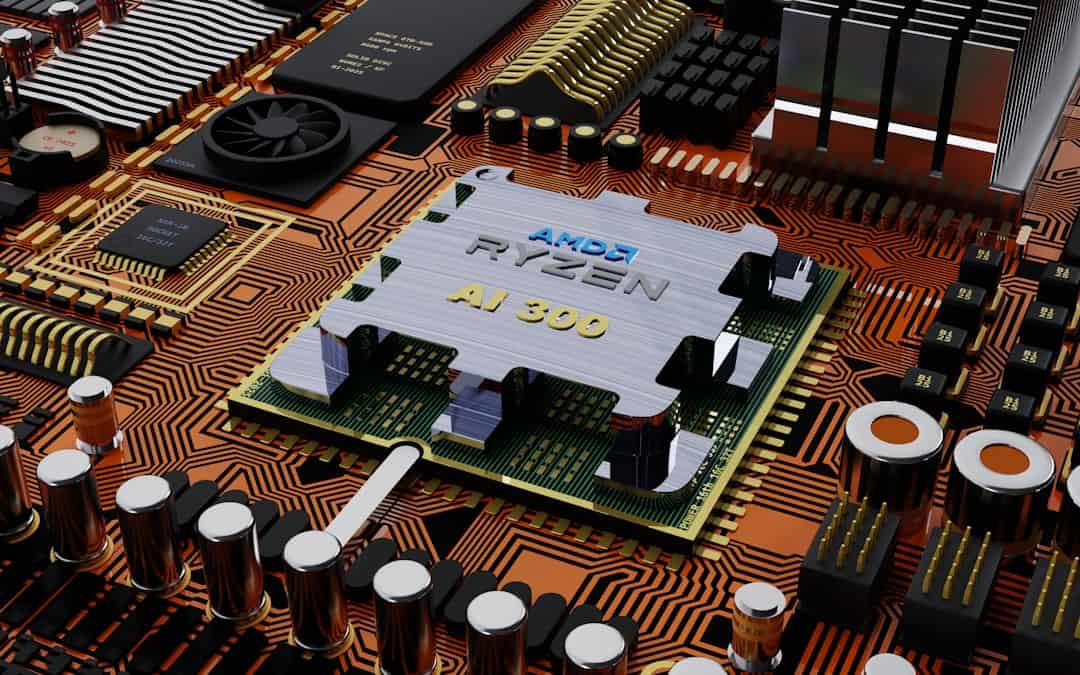Bayesian deep learning combines Deep Learning techniques with Bayesian inference to incorporate uncertainty into model predictions. This approach enhances the robustness and reliability of deep learning models, making them more effective in complex and uncertain environments. The integration of Bayesian methods allows AI systems to quantify uncertainty, leading to more accurate predictions and improved decision-making capabilities.
The potential applications of Bayesian deep learning are vast and diverse. In healthcare, it can improve diagnostic accuracy and treatment recommendations by accounting for uncertainties in patient data. In finance, it can enhance risk assessment and portfolio management by considering market volatility.
For autonomous vehicles and robotics, Bayesian deep learning can enable more reliable navigation and decision-making in dynamic environments. As artificial intelligence continues to evolve, Bayesian deep learning is expected to play a significant role in advancing the field. Its ability to handle uncertainty and provide more reliable results addresses some of the key challenges faced by traditional deep learning approaches.
This makes Bayesian deep learning a promising area of research and development for creating more trustworthy and effective AI systems across various industries and applications.
Key Takeaways
- Bayesian Deep Learning combines the principles of Bayesian statistics with deep learning to improve AI models’ uncertainty estimation and decision-making.
- Understanding the principles of Bayesian Deep Learning involves incorporating prior knowledge, updating beliefs with new evidence, and calculating posterior probabilities.
- Applications of Bayesian Deep Learning in AI include image recognition, natural language processing, and reinforcement learning, where uncertainty estimation is crucial.
- Advantages of Bayesian Deep Learning in AI include robustness to overfitting, better uncertainty quantification, and improved model calibration, while challenges include increased computational complexity and the need for large datasets.
- Implementing Bayesian Deep Learning in AI systems involves using techniques such as variational inference, Monte Carlo methods, and Bayesian neural networks to incorporate uncertainty into model predictions.
- Future developments and research in Bayesian Deep Learning and AI will focus on improving scalability, efficiency, and interpretability of Bayesian models, as well as exploring new applications in healthcare, finance, and autonomous systems.
- Conclusion: Harnessing the potential of Bayesian Deep Learning in AI can lead to more reliable and trustworthy AI systems, with improved decision-making and risk management capabilities.
Understanding the Principles of Bayesian Deep Learning
At its core, Bayesian deep learning combines the principles of deep learning with Bayesian inference, a statistical method for estimating the probability of a hypothesis. In traditional deep learning, models are trained to make predictions based on a fixed set of parameters, leading to deterministic outputs. However, in Bayesian deep learning, the parameters are treated as random variables with associated probability distributions, allowing for the incorporation of uncertainty into the model’s predictions.
One of the key principles of Bayesian deep learning is the use of probabilistic modeling to capture uncertainty in data. By representing the uncertainty in the model’s parameters, Bayesian deep learning can provide more reliable predictions and make better decisions in uncertain and complex environments. This is particularly important in real-world applications where data is often noisy and incomplete, and where making accurate predictions in the presence of uncertainty is crucial.
Another important principle of Bayesian deep learning is the use of Bayesian inference to update the model’s beliefs about the parameters based on new evidence. This allows the model to continuously learn from new data and update its predictions accordingly, leading to more adaptive and robust AI systems. By incorporating these principles into deep learning models, Bayesian deep learning has the potential to significantly improve the reliability and trustworthiness of AI systems.
Applications of Bayesian Deep Learning in AI

The applications of Bayesian deep learning in AI are vast and diverse, spanning across various industries and domains. In healthcare, for example, Bayesian deep learning can be used to improve medical diagnosis and prognosis by providing more accurate predictions and quantifying uncertainty in medical data. This can lead to better patient outcomes and more personalized treatment plans, ultimately saving lives and reducing healthcare costs.
In finance, Bayesian deep learning can be applied to risk assessment and portfolio management, where uncertainty plays a crucial role in decision-making. By incorporating Bayesian methods into financial models, AI systems can better understand and quantify risk, leading to more informed investment decisions and improved financial outcomes. In autonomous vehicles and robotics, Bayesian deep learning can be used to improve perception and decision-making in uncertain and dynamic environments.
By capturing uncertainty in sensor data and modeling the variability in the environment, AI systems can make more reliable decisions and navigate complex scenarios with greater confidence. These are just a few examples of the many potential applications of Bayesian deep learning in AI. As the field continues to advance, we can expect to see even more innovative uses of this approach across a wide range of industries and domains.
Advantages and Challenges of Bayesian Deep Learning in AI
| Advantages | Challenges |
|---|---|
| Handles uncertainty well | Complexity in implementation |
| Effective for small data sets | Requires strong mathematical background |
| Provides probabilistic predictions | Computationally intensive |
| Enables model interpretability | Difficulty in tuning hyperparameters |
One of the key advantages of Bayesian deep learning in AI is its ability to provide more reliable predictions and make better decisions in uncertain and complex environments. By capturing uncertainty in data and modeling variability in the environment, Bayesian deep learning models can make more informed decisions and provide more accurate predictions. This has significant implications for a wide range of applications, from healthcare and finance to autonomous vehicles and robotics.
Another advantage of Bayesian deep learning is its ability to continuously learn from new data and update its predictions accordingly. By using Bayesian inference to update the model’s beliefs about the parameters based on new evidence, AI systems can adapt to changing environments and make more robust decisions over time. This makes Bayesian deep learning particularly well-suited for real-world applications where data is often noisy and incomplete.
However, there are also challenges associated with implementing Bayesian deep learning in AI systems. One challenge is the computational complexity of Bayesian inference, which can be prohibitively expensive for large-scale models and datasets. Another challenge is the interpretability of Bayesian deep learning models, as the incorporation of uncertainty into the predictions can make it more difficult to understand how the model arrives at its decisions.
Despite these challenges, the advantages of Bayesian deep learning in AI are significant, and ongoing research is focused on addressing these challenges to further harness the potential of this approach.
Implementing Bayesian Deep Learning in AI Systems
Implementing Bayesian deep learning in AI systems requires careful consideration of the underlying principles and computational methods involved. One approach to implementing Bayesian deep learning is through the use of probabilistic programming languages, which provide a framework for expressing probabilistic models and performing Bayesian inference. These languages allow for the flexible specification of complex probabilistic models and enable efficient inference algorithms to be applied.
Another approach to implementing Bayesian deep learning is through the use of variational inference, which approximates the true posterior distribution with a simpler distribution that is easier to work with computationally. Variational inference has been widely used in Bayesian deep learning to scale up to large-scale models and datasets while maintaining computational efficiency. In addition to these computational methods, implementing Bayesian deep learning in AI systems also requires careful consideration of model architecture and training procedures.
This includes designing models that can capture uncertainty in data and making use of training algorithms that can update the model’s beliefs about the parameters based on new evidence. Overall, implementing Bayesian deep learning in AI systems requires a combination of computational methods, model design, and training procedures to effectively capture uncertainty in data and make more reliable predictions.
Future Developments and Research in Bayesian Deep Learning and AI

The future developments and research in Bayesian deep learning and AI are focused on addressing the challenges associated with implementing this approach at scale. One area of research is focused on developing more efficient computational methods for performing Bayesian inference, particularly for large-scale models and datasets. This includes exploring new algorithms for variational inference and developing parallelized and distributed computing techniques to scale up to big data settings.
Another area of research is focused on improving the interpretability of Bayesian deep learning models, particularly as they are applied to real-world applications where trustworthiness is crucial. This includes developing methods for visualizing uncertainty in predictions and understanding how uncertainty propagates through different layers of a deep learning model. In addition to these technical challenges, future research in Bayesian deep learning is also focused on exploring new applications and domains where this approach can have a significant impact.
This includes areas such as climate modeling, natural language processing, and reinforcement learning, where uncertainty plays a crucial role in decision-making. Overall, the future developments and research in Bayesian deep learning are focused on addressing technical challenges, improving interpretability, and exploring new applications to further harness the potential of this approach in AI.
Harnessing the Potential of Bayesian Deep Learning in AI
In conclusion, Bayesian deep learning has the potential to revolutionize the way AI systems are developed and deployed by providing more reliable predictions and making better decisions in uncertain and complex environments. By capturing uncertainty in data and continuously updating beliefs about parameters based on new evidence, Bayesian deep learning models can make more informed decisions over time. While there are challenges associated with implementing this approach at scale, ongoing research is focused on addressing these challenges to further harness the potential of Bayesian deep learning in AI.
As the field continues to advance, we can expect to see even more innovative applications of this approach across a wide range of industries and domains. Overall, Bayesian deep learning represents a powerful approach for improving the reliability and trustworthiness of AI systems, with significant implications for a wide range of applications. By integrating uncertainty into predictions and decision-making processes, this approach has the potential to significantly advance the field of AI and contribute to more robust and reliable AI systems in the future.
If you’re interested in the ethical considerations of emerging technologies like Bayesian deep learning, you may want to check out this article on challenges and opportunities in the metaverse, which discusses the ethical considerations of virtual reality and other immersive technologies. It provides valuable insights into the ethical implications of cutting-edge technologies and how they can be addressed in a responsible manner.
FAQs
What is Bayesian deep learning?
Bayesian deep learning is a field that combines deep learning techniques with Bayesian statistics. It aims to incorporate uncertainty into the predictions made by deep learning models, providing more reliable and robust results.
How does Bayesian deep learning differ from traditional deep learning?
Traditional deep learning models provide point estimates for their predictions, while Bayesian deep learning models provide probability distributions over the predictions. This allows for a more nuanced understanding of uncertainty in the model’s output.
What are the benefits of using Bayesian deep learning?
Bayesian deep learning can provide more reliable predictions by accounting for uncertainty in the data. It also allows for better model calibration and can provide insights into the model’s confidence in its predictions.
What are some applications of Bayesian deep learning?
Bayesian deep learning has been applied to a wide range of fields, including computer vision, natural language processing, and healthcare. It has been used for tasks such as image recognition, language translation, and medical diagnosis.
What are some challenges of implementing Bayesian deep learning?
Implementing Bayesian deep learning can be computationally intensive, as it often requires sampling from complex probability distributions. It can also be challenging to interpret the uncertainty estimates provided by Bayesian models.











Leave a Reply